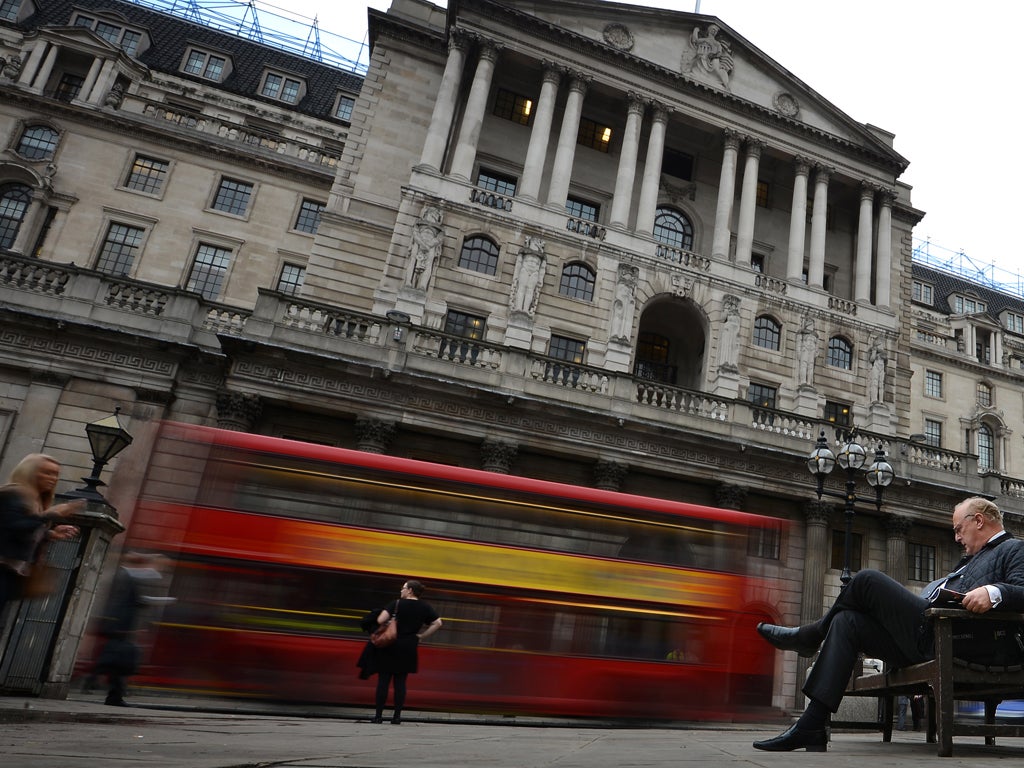Bank of England stress tests held up as "toughest ever". They need to be
Every year the tests have been conducted one or more banks have failed

Your support helps us to tell the story
From reproductive rights to climate change to Big Tech, The Independent is on the ground when the story is developing. Whether it's investigating the financials of Elon Musk's pro-Trump PAC or producing our latest documentary, 'The A Word', which shines a light on the American women fighting for reproductive rights, we know how important it is to parse out the facts from the messaging.
At such a critical moment in US history, we need reporters on the ground. Your donation allows us to keep sending journalists to speak to both sides of the story.
The Independent is trusted by Americans across the entire political spectrum. And unlike many other quality news outlets, we choose not to lock Americans out of our reporting and analysis with paywalls. We believe quality journalism should be available to everyone, paid for by those who can afford it.
Your support makes all the difference.Every year that the Bank of England has run stress tests on Britain’s banks, one or other of them have failed.
What tends to happen is this: The regulators dream up an economic nasty and tell the banks to run it against their balance sheets as they were at the end of the previous year.
One or two of the banks end up looking as if they would struggle in the event the nightmare scenario happens. They have to come up with some sort of plan to fix their capital issues in a hurry. They present it to the Bank. It grants them a retrospective pass if the plan passes muster.
Last year, for example, Barclays looked shaky. However, it was deemed to have passed because in between the end of 2015 and the unveiling of the test results, it had sold part of its African business and raised capital.
RBS caused a bit more of a scare, rushing out a statement to say that it would take a range of actions to plug the hole identified were it to have found itself in the stressed scenario. The Bank gave it the necessary grade, but the market got spooked, and no wonder.
The tests are particularly important this year because, with the Brexit process set to start, Britain is at a much higher risk of entering a “stressed scenario”.
This time it really could hit the fan.
“Risks to financial stability will be influenced by the orderliness of the adjustment to the new relationship between the UK and the European Union,” the Bank opined.
In other words, if the two sides don't play nice we're in for it. Oh dear.
The Bank's stress scenario takes that "oh dear" into account. As with last year, it envisages unemployment spiking to 9.5 per cent, combined with a 33 per cent fall in house prices. UK GDP falls by 4.7 per cent, but base rates increase to 4 per cent. Global GDP contracts by 2.4 per cent and Chinese GDP by 1.2 per cent.
The UK struggles as overseas investors fight shy of UK assets, making it harder (and much more expensive) for the Government to borrow money.
In addition, there is the first of what will be a biennial look at how banks cope with a longer term horror, “severe and synchronised stress” to the global economy, including weak trade and UK interest rates falling to 0 per cent.
The results, which we will see towards the end of the year, will make for interesting, and perhaps disturbing, reading. And there will be two naughty steps. It’ll be a minor miracle if they’re both empty.
This year’s tests are held up as the “toughest ever”. They need to be.
Join our commenting forum
Join thought-provoking conversations, follow other Independent readers and see their replies
Comments